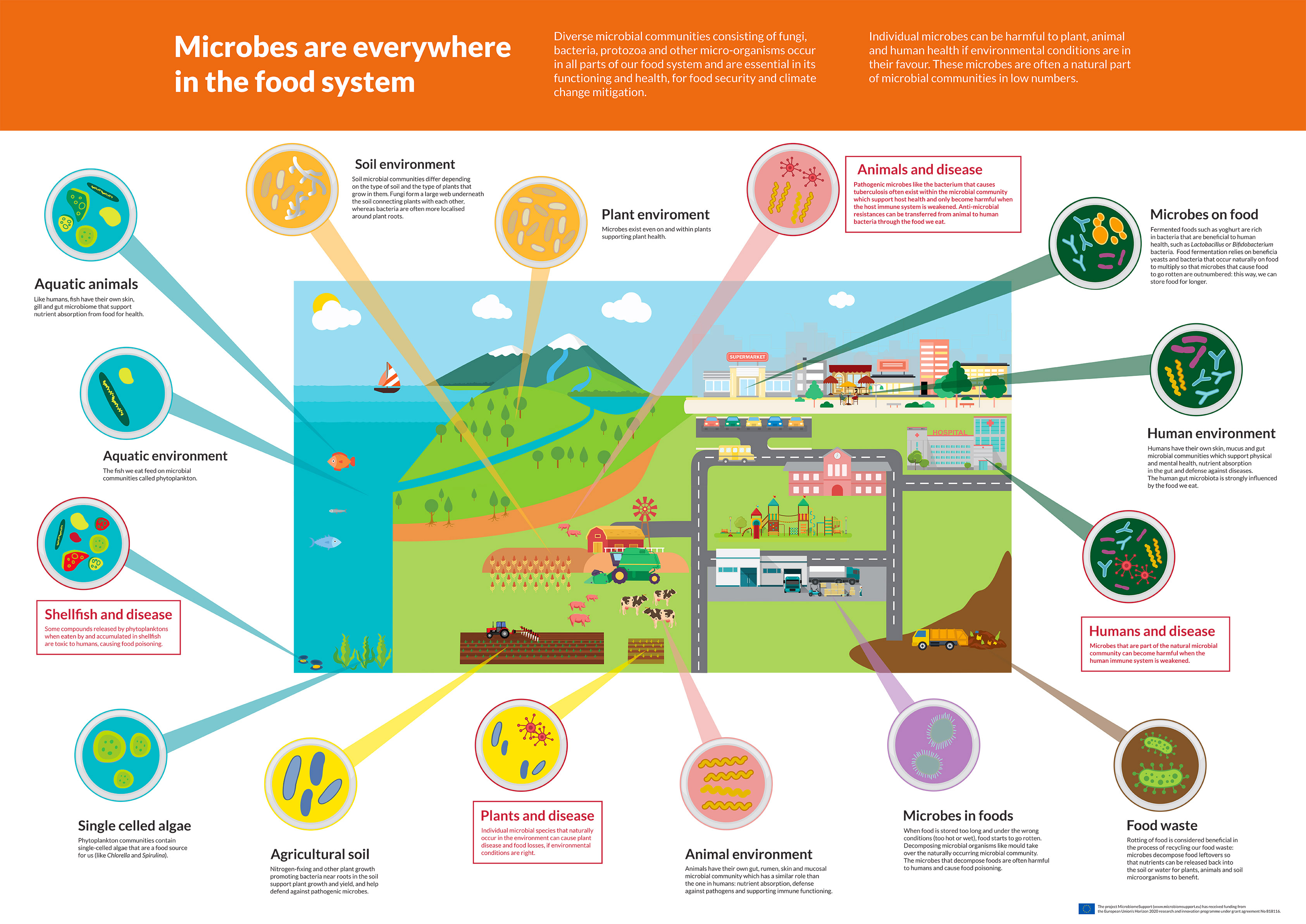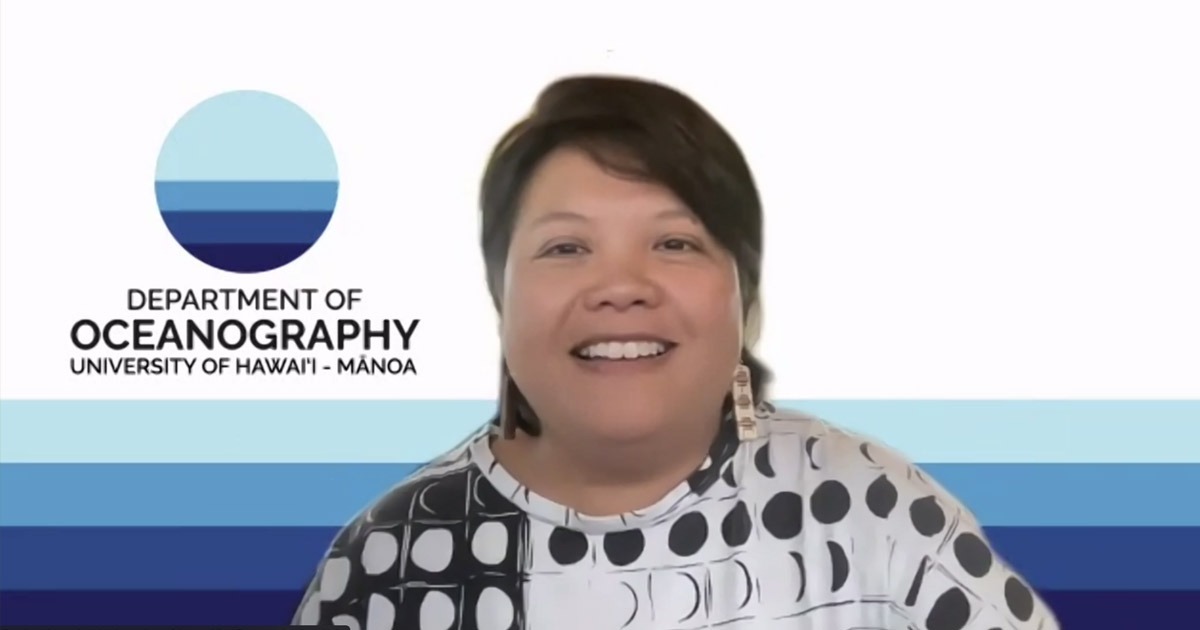Indigenous people are stewards of 25% of the earth’s land base, which accounts for 80% of global biodiversity, according to Rosie Alegado, Ph.D., an associate professor with the Center for Microbial Oceanography at the University of Hawaii at Manoa. Alegado discussed her research into how climate-related weather events affect microbial diversity as well as the importance of building equitable scientific partnerships with Indigenous communities during her May 24 NIEHS lecture.
“I really bring my whole self to my science,” Alegado said. “As an intersectional scientist, I am a woman, I am an Indigenous person, and I am an Asian Pacific Islander, and it is important how I navigate my research in Indigenous spaces,” said Alegado.
The Diversity Speaker Series event in recognition of Asian American, Native Hawaiian, and Pacific Islander Heritage Month was hosted by the NIEHS Office of Science Education and Diversity (OSED).
“As a social scientist, I just want to thank you very much for sharing your community with us and for sharing some of the language, and connecting that to your science,” said Ericka Reid, Ph.D., OSED director. “That is a special touch to demonstrate this is all so much more than just one thing, it is a combination of many things, including science, community, and culture. I personally appreciate that a great deal.”
Kūlana Noiʻi
Indigenous communities often have a complicated relationship with science, Alegado explained, so she co-developed a process named Kūlana Noiʻi to establish equitable community relationships between researchers and communities.
Alegado has piloted these place-based standards over the past nine years at Heʻeia Fishpond, an ancient fishpond located on the island of Oahu.
“In academia, we have our own cultural system, we have our own timelines with grant cycles of three to five years, and students we need to help graduate,” Alegado said. “We very much have our own issues, needs, and interests. But let us not ignore the fact that the communities in which we are conducting our research are those that have been there for multiple generations — a place where the people have their own multi-generational needs, issues, and interests. Oftentimes, all of these things do not overlap.”
Kūlana Noiʻi presents eight standards to be applied as a process, not a checklist, while detailing the rights and responsibilities for sustaining an equitable and productive partnership in research.
- Accountability.
- Communication.
- Community engagement and co-review.
- Knowledge stewardship.
- Maintain a long-term focus.
- Reciprocity.
- Respect.
- Self-awareness and capacity.
Mighty microbes
Understanding the underpinnings of microbes and how their processes and cycles influence biodiversity is one of Alegado’s top fascinations. She often asks how macro- and micro-level biological diversity remains resilient when facing increased environmental destabilization.

“Climate change and microbes are definitely a threat multiplier,” she explained. “Microbes can act as bioremediators of pollutants or potential emerging pathogens. From land to ocean, our whole global environment is really reliant on microbes. Yet, microbes are very much a black box because all of our climate models are top-down and global in scale, and they definitely do not downscale to how microbes are affecting everything. There is actually such a bottom-up force that is happening, but it is just not something we think about every day.”
In Hawaii, the Pacific Ocean, and around the globe, climate change-related increases in storm frequency and intensity continue to grow. Alegado said she is working hard to include microbes in climate change studies to aid in policy development.
Fishing for answers
To do so, she is tracking ecological, taxonomic, and physiological changes in microbial communities in response to climate events. She hopes to use microbial data to inform climate models and better understand the eco-evolutionary processes underlying such systems and events.
Alegado and her collaborators conduct research at an 800-year-old fishpond that is a native Hawaiian Indigenous social-ecological system. The fishpond, a mix of fresh and salt water, creates an artificial estuary system with a unique biochemistry to farm large phytoplankton and the macroalgae they eat. The fishpond has served as a picturesque example of sustainability and food security for hundreds of years.
Camilla Tongachini, a recent graduate student in Alegado’s lab, deployed instrumentation into the fishpond to record micro-level data every 15 minutes. They wanted to test the pulse disturbance hypothesis in the indigenous engineered system. They collected data for nine years, organizing it by the Hawaiian moon calendar.
Wali brings answers
In 2014, Tropical Storm Wali was the first tropical storm to hit the island of Oahu in over 30 years.
“We were actually, serendipitously, able to capture a huge amount of data from two weeks before the storm and then two weeks after,” Alegado recalled.
Flooding caused changes in temperature and a 300% increase in turbidity, or cloudiness, and turned the brackish fishpond to fresh water for 19 days. The force of the flood was so strong that it masked the tidal signal and the stream totally flushed out the fishpond with sediment and pollutants.
“I really thought that everything was going to change the microbial community, but I was proven wrong,” said Alegado. “The microbial eukaryote diversity did not change during the storm. The phytoplankton also did not change, but the abundance of the types of phytoplankton did change. In other words, this pulse of nutrients that came in likely stimulated a phytoplankton bloom.”
What did change dramatically were the bacteria. The bacterial diversity increased, and the composition of the bacterial community was also quite different.
“The storms did increase the pathogenic load, but we found they were pretty resilient to these changes,” she noted. “Although the community shifted, they did return back and were similar to where they began, so we saw resistance, resilience, and functional redundancy all happening in the fishpond.”
Alegado and her team are in the process of putting together all nine years of data to examine whether a predictive fingerprint exists in terms of microbial diversity.
(Jennifer Harker, Ph.D., is a technical writer-editor in the NIEHS Office of Communications and Public Liaison.)
Source link
factor.niehs.nih.gov

